Rio Claro Nature Reserve (Reserva Natural Cañon de Río Claro) is one of the biggest highlights during my time living so far in Medellín. It is considered by many as one of the must-do activities in Antioquia. And it is located only about three hours from Medellín.
Rio Claro is also the perfect place to enjoy an abundance of nature with a picturesque crystal-clear river, canyon and tropical rainforest. In addition, it enables completely unplugging from the hectic pace of daily life in the city.
I have traveled to 46 countries and have been to some of the most geographically stunning places – including the Galápagos Islands, Salar de Uyuni and Himalayas – over the past three decades.
Still, for me, few places in the world can compete with the Rio Claro Nature Reserve in southern Antioquia, or more specifically, the Middle-Magdalena region. Note the above photo of Rio Claro is by Motero Colombia.

Rio Claro, photo by Motero Colombia
History of Rio Claro
Established in 1970, the 1,606 acre (650 hectare) Rio Claro Nature Reserve is a private reserve and it’s a spectacular example of Colombia’s biodiversity. It is located about 94 miles (152 km) southeast of Medellín on the Medellín – Bogotá highway.
The reserve sits atop the remnants of a shallow sea and coral reefs. It is literally a marble canyon with a river running through it. And the sieve-like topography provides striking artistic evidence of 6 million years of hydropower. The karst formations include deep caves, stalactites, stalagmites, rock ripples and ladders.
The formation of Rio Claro’s watershed, has its origins in sedimentary deposits from the Devonian Period (419-358 million years ago). The Rio Claro area formed part of a large shallow-sea that received sediments deposited by the Amazon River. At the time the Amazon flowed from south to north, originating in Brazil and forming a large delta in present-day Colombia.
As the Central Andean mountain range emerged in Colombia, the limestone sediments that were deposited during the Devonian Period were transformed into marble crystals that were gradually exposed and sculpted by Rio Claro’s waters. This resulted in the canyon that we see today.
About 4 million years ago, the shallow sea began to subside, as the limestone deposits emerged. Finally, about 2 million years ago, waters withdrew permanently. And this coincided with the emergence of the Isthmus of Panama and the separation of the Pacific and Atlantic Oceans.
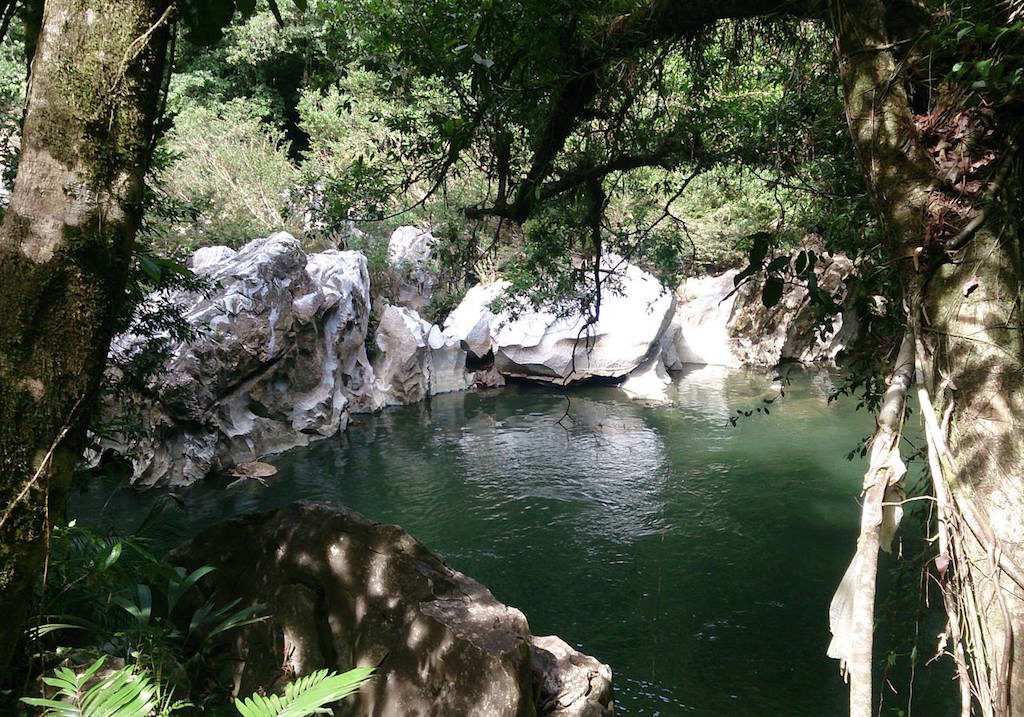
Rio Claro, photo by Motero Colombia
An Abundance of Nature and Biodiversity
Almost every area of the reserve offers a view of the river, canyon and tropical rainforest. This exquisite framing creates a Garden of Eden effect, further accentuated by the sublime chorus of birds, insects and monkeys.
Here, the diversity is not simply geological. Animal species within the reserve are estimated at 100 species of mammals, 350 species of birds, 70 species of reptiles, 45 species of amphibians, and 50 species of fish, beyond abundant species of insects and invertebrates.
But what is most easily seen? Monkeys, otters, toucans, iguanas, sloths and giant blue Morpho butterflies!
According to Álvaro Cogollo, Director of Medellín’s Botanical Garden,
“Rio Claro is one of 58 endemic hotspots in Colombia that has a multitude of species found nowhere else in the world.”
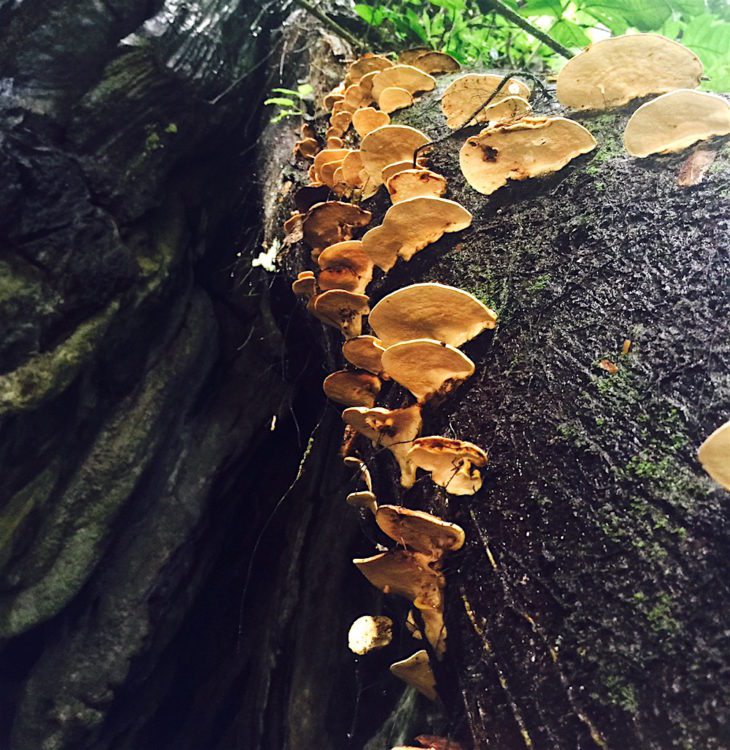
Many mushrooms are found throughout the reserve
This includes all manner of plant life. This is a tropical rainforest set at 350 meters (Medellín is 1,500 meters) so it’s slightly humid and rich with trees, flowers and plants not seen at higher elevations.
Exploration of this vast landscape is a delight, its mysteries and lushness accessible and safe. Just be sure to bring a flashlight or headlight for evening walks, as none of the pathways in the reserve are illuminated.

Rio Claro rafting, photo courtesy of Rio Claro Nature Reserve
Rio Claro Activities
Visitors to Rio Claro can partake in several activities appropriate for a range of abilities. There is a two-hour and thirty-minute Class I and II (out of a six-point scale) rafting trip in inflatable rafts. And this rafting trip provides access to bird, reptile and monkey sightings as well as a leisurely swimming break.
Many families come to Rio Claro due to the Class I rafting that children as young as four may participate. Also, there is a zip-line with short cables that children as young as eight can participate. So, Rio Claro is considered kid-friendly.
A three-hour Cueva de los Guacharos cave and stream walk is also offered, giving access to Oilbird sightings and the psychedelic formations within. This is a somewhat challenging activity as it includes wading through waist-high water. In addition, there is zip-lining, rock-climbing and naturalist walks.
The rafting activity costs 25,000 pesos per person. All other activities at Rio Claro cost 20,000 pesos per person. Make sure to make reservations for any activities at the reserve’s activities booth. Many of the activities take place in the morning. So, to participate you need to stay overnight.
Also, there are many swimming beaches throughout the reserve. Most have lifeguards and ropes set up to allow swimmers to safely cross from one side of the river to the other. Take care though, the river may seem calm on its surface, but it has strong, deep currents worthy of precaution.

Playa de Marmól
My two favorite beaches were Playa de Marmól (Marble Beach) located directly in front of the El Refugio, with its massive slab of marble for sunbathing and Playa del Manantial.

Caverna de los Guácheros (Oilbird cave), photo by Motero Colombia
Playa del Manantial has direct access to the Caverna de los Guácheros (Oilbird cave).
Relaxation sets in almost immediately, deepened by the cool, clear water and an impossibly blue sky.

Hotel Rio Claro, photo courtesy of Rio Claro Nature Reserve
Rio Claro Accommodations
The room rates at Rio Claro are per-person and vary depending on if it is high season or low season. High season includes:
- Holiday weekends
- Easter (Semana Santa)
- Mid-year vacations (June, July and August)
- End of year vacations (December and January)
Fortunately, Rio Claro offers a range of accommodations, depending on your interest/budget.
- Hotel Rio Claro – At the entrance is a traditional hotel with pool, restaurant and cabin style rooms. This is a good option for families with small children. The rate per person for a room with air-conditioning is 130,000 pesos during low season and 160,000 pesos during high season. With a fan, the rate is 130,000 pesos per person during low season and 150,000 pesos during high season.
- La Mulata Cabins – Half a kilometer along a dirt road is La Mulata, two multi-story lodges. Rate per person is 140,000 pesos during low season and 150,000 pesos during high season.
- Blue-Morpho Eco-Lodge – At the one kilometer mark, there is the activity center, dining room and Blue-Morpho Eco-Lodge. This is a good place for families and people with limited mobility. Rate per person is 100,000 pesos during low season and 110,000 pesos during high season.
- El Refugio Cabins – A 10-minute walk past the dining room along a rock lined pathway, these three-story lodges set high on the hillside are absolutely stunning and offer panoramic views. Rates here depend on the view and range from 130,000 to 220,000 pesos per person during low season. During high season the rates range from 150,000 to 255,000 pesos per person.
- Camping – Near the entrance gate camping is available along the river. Campfires and barbecues are permitted only in this area. Camping costs 35,000 pesos per person for three nights.

El Refugio, photo courtesy of Rio Claro Nature Reserve

Trail between dining/activities center and El Refugio
The Rio Claro Restaurant
The room rates at Hotel Rio Claro, La Mulata Cabins, Blue-Morpho Eco-Lodge and El Refugio Cabins include three daily meals at the reserve restaurant. The food is traditional Colombian, ample and delicious. If fish is the main dish for a meal, an extra charge of 2,000 pesos is collected.
Breakfast includes coffee, chocolate or tea. However, beverages are not included with lunch or dinner but are available for purchase. Desserts are also extra. For safety reasons, liquor is not sold, and liquor consumption is not allowed on the reserve.
Restaurant hours are:
- Breakfast – 8 am to 10 pm
- Lunch – noon to 2 pm
- Dinner – 6 pm to 8 pm
How to Make Reservations
Making reservations is mostly easily done by visiting Rio Claro’s office adjacent to Parque Poblado in Medellín. This ensures getting the room you want, clarifying details and instructions on how to deposit funds into Río Claro’s Bancolombia account.
- Hours: Monday to Friday 8:00 a.m. to 6:00 p.m.
- Phone: (574) 268 8855 – (311) 354 0119
- Email: info@rioclaroreservanatural.com
Note that Rio Claro has a no refund policy but customers reportedly can reschedule reservations for a period of up to six months, if needed.

View along Rio Claro
Rio Claro Recommendations
The best time to visit is not during the rainy season due to the river being pretty muddy. Other times of the year, Rio Claro lives up to its name in Spanish – “Clear River” with crystal-clear water. In addition, during the week is the best time to go as you may have the place nearly to yourself.
Also keep in mind that English is not widely spoken among staff. So, please be patient. Furthermore, no pets are permitted on the reserve for safety reasons. So, leave pets at home
Rio Claro does does not assume any responsibility for objects of value left in rooms or in common areas. The front desk will store any valuable (cameras, jewelry, cellphones, electronics and other items of value) in a safe, accessible at your request. Also the tap water at Rio Claro is not potable. So, drinking bottled water is recommended. Water in the reserve comes from natural springs, and is untreated.
Make sure you come prepared with sufficient Colombian cash. Only cash is accepted inside the reserve for payment. The reserve does not accept credit cards or checks. The nearest ATM machine is at the pueblo Doradal, which is about 30 minutes away. And reportedly this ATM doesn’t always work.
In addition, I recommend bringing a flashlight, towels, swimsuit, sunblock, mosquito repellant, hiking shoes and water shoes. Also, luggage without wheels is preferred, such as backpacks.
How to Get to Rio Claro
Visiting Rio Claro is easy from Medellín. Simply take a TransOriente bus for 25,000 pesos from the Terminal del Norte. The buses depart about every 30 minutes.
The trip is approximately three hours (or about five hours if coming from Bogotá). However, landslides and holiday weekends can significantly slow travel time. The entrance to the reserve is located roughly one-third of the way between Medellín (94 miles – 152 km from the city) and Bogotá (164 miles or 264 km from Bogotá).
Make sure to tell the bus driver you want to be dropped at the entrance to Rio Claro by saying you want to be dropped off at the “entrada de la reserva Rio Claro.” This will ensure the driver will stop directly in front of the entrance to Rio Claro reserve.
To return to Medellín just flag down any bus on the side of the highway which pass every 30 minutes or so.
Website: http://www.rioclaroreservanatural.com/
Top Things to See and Do in Colombia
On the Medellin Guru website, we have been looking at some of the most beautiful places in Colombia in a series of top things to see and do in Colombia. This is due to many readers asking about several of these things to do in Colombia.
We have looked at 20 of the top things to see and do in Colombia, in alphabetical order:
- Caño Cristales – the most beautiful river in Colombia, which has also been called the most beautiful river in the world by some people.
- Carnival in Barranquilla – the second largest carnival in the world.
- Cartagena – Oozing history, romance and sun-drenched beaches, the allure of historical Cartagena is hard to resist.
- Ciudad Perdida – the site of an ancient city in Colombia that is older than Machu Picchu in Peru.
- Colombia’s Pacific coast – often overlooked by tourists visiting Colombia but offering untamed nature and undiscovered beauty that is off the beaten path for most foreign tourists.
- Desierto de la Tatacoa – the second largest arid zone in Colombia is Tatacoa Desert, which has surreal desert landscapes and some of the best stargazing in Colombia.
- Guatapé – a picturesque pueblo near Medellín known for its huge rock and lake. And it’s likely the most visited pueblo in Colombia by foreigners.
- La Guajira Peninsula – one of the most visually stunning places in South America, which is located on the northern tip of Colombia where the desert meets the sea.
- Las Lajas Sanctuary – the most beautiful church in Colombia, which has also been called the most beautiful church in the world.
- Medellín’s Christmas lights – Medellín’s annual world-class Christmas lights known as Alumbrados Navideños.
- Medellín’s Feria de Las Flores – Medellín’s world-famous flower festival each year.
- Parque Nacional Natural Los Nevados – a popular national park in Colombia located in the heart of the Colombian coffee region.
- Parque Tayrona – known for its beautiful beaches and the world’s highest coastal mountain range.
- Popayán – a colonial gem in Colombia best known for its white buildings and churches, it’s a city off the beaten path for foreign tourists but is definitely worth visiting.
- Rio Claro Nature Reserve – located about three hours from Medellín, Rio Claro is the perfect place to unplug from hectic daily life and enjoy a picturesque crystal-clear river, canyon and tropical rainforest.
- Salento and the Cocora Valley – Salento is a picturesque pueblo in Colombia’s coffee region and the nearby Cocora Valley is one of the most striking landscapes found in Colombia.
- San Agustín Archaeological Park – the largest group of pre-Columbian monuments and megalithic statues in South America and is a UNESCO World Heritage Site.
- San Andrés – Colombia’s Caribbean island which is a UNESCO World Biosphere Reserve featuring many beaches, islets and coral reefs that are filled with flora and fauna.
- San Gil – Colombia’s adventure capital that is full of things to do including white water rafting, paragliding, caving, rappelling, hiking and much more.
- San Jose del Guaviare – a hidden gem and eco-tourism location off the beaten path and offering wildlife watching, jungle trekking and delving into Colombia’s prehistoric past.
Also, we included Rio Claro in our list of the top 20 tourist attractions in Colombia.
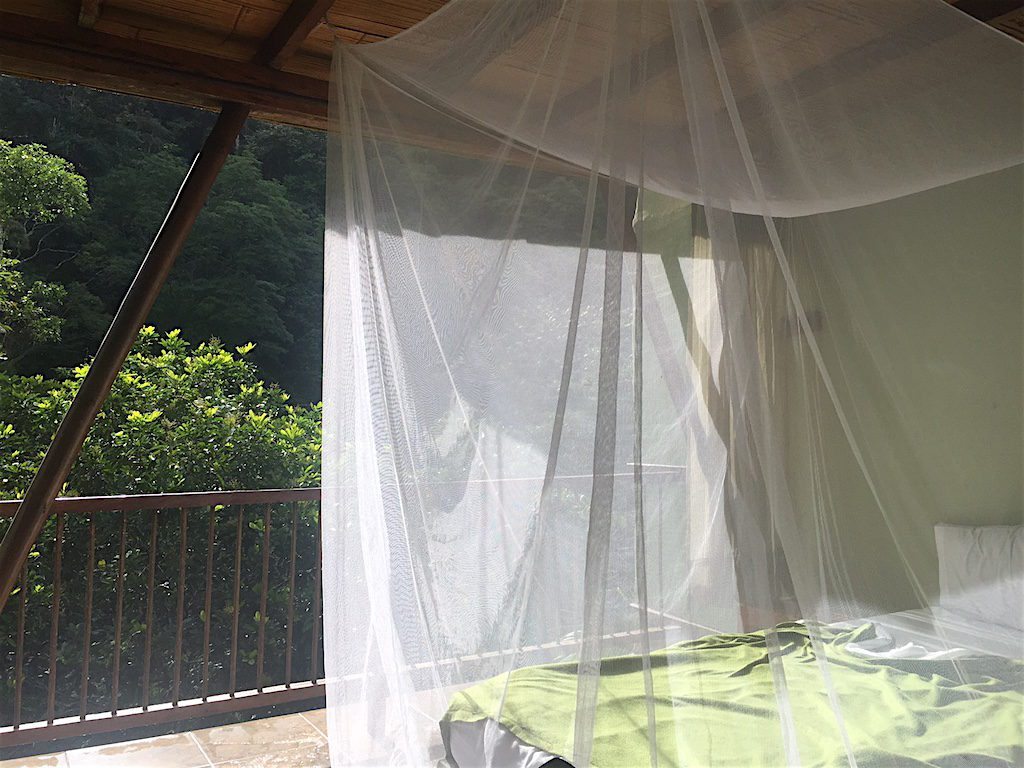
La Natura room in El Refugio, bed draped in a mosquito net
The Bottom Line – Rio Claro
Give yourself at least two nights at Rio Claro. I highly recommend staying at El Refugio, specifically the third-floor corner rooms. Although they are the most expensive, the jaw-dropping views from the comfort of a queen size bed draped in a mosquito net are unforgettable.
Rio Claro is truly the quintessential place to unplug. There are no TVs here and Wifi is only available at the main entrance reception area. So, let the jungle sounds lull you to peaceful sleep and discover the extraordinary beauty of nature.
Sign up for the Free Medellin Guru Newsletter – You can see all of the previous Medellin Guru weekly email newsletters and sign up here.
Editors note: updated on January 16, 2019 to revise the Rio Claro accommodation prices, which have changed.


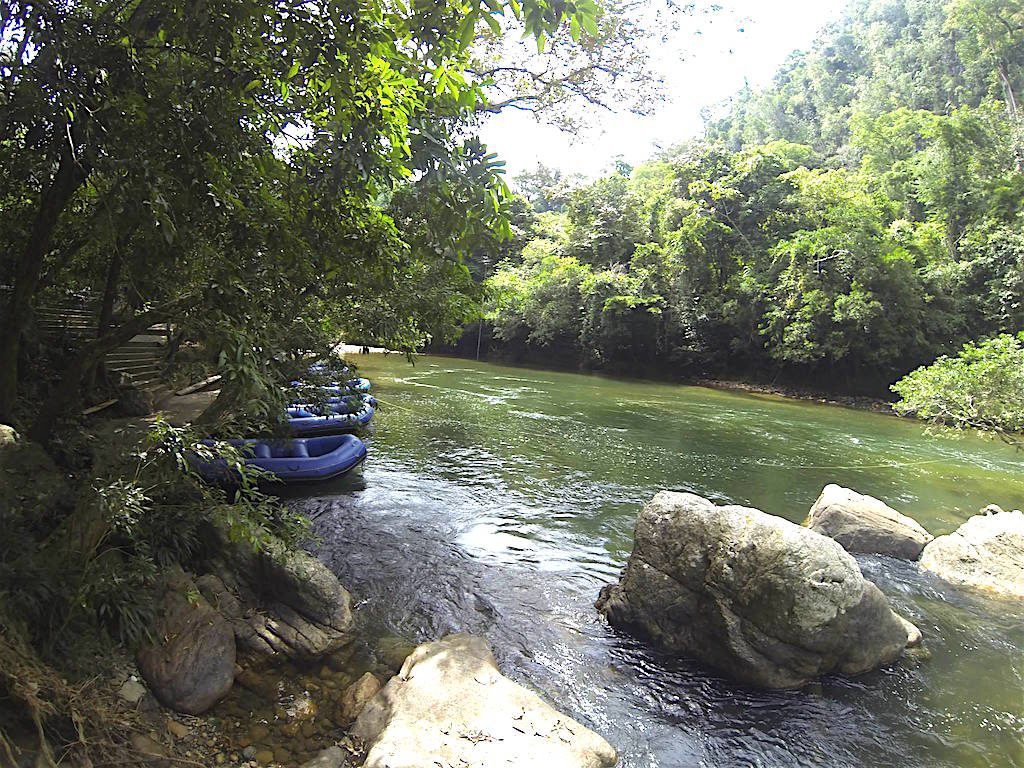





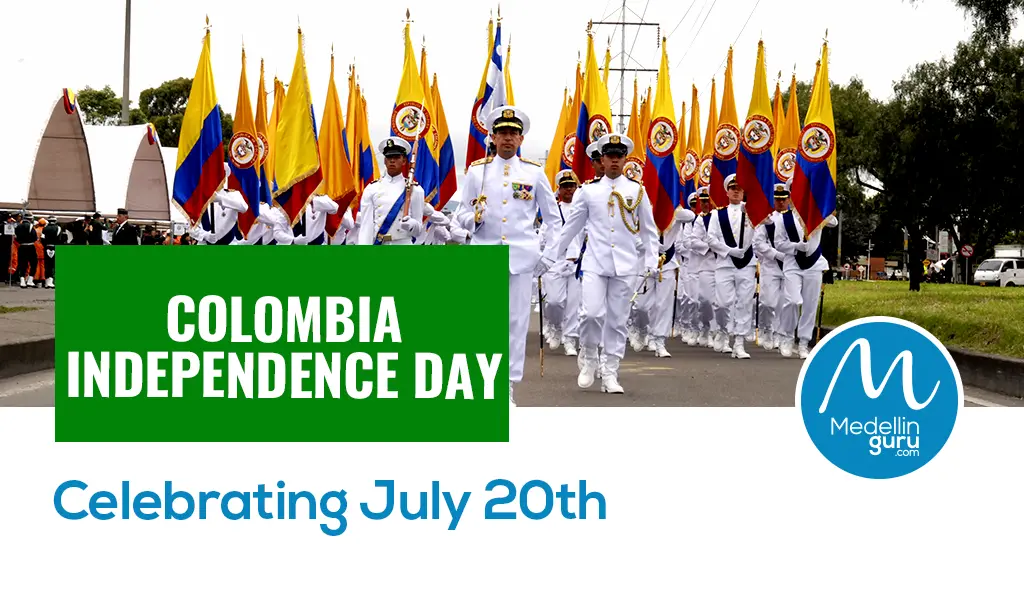
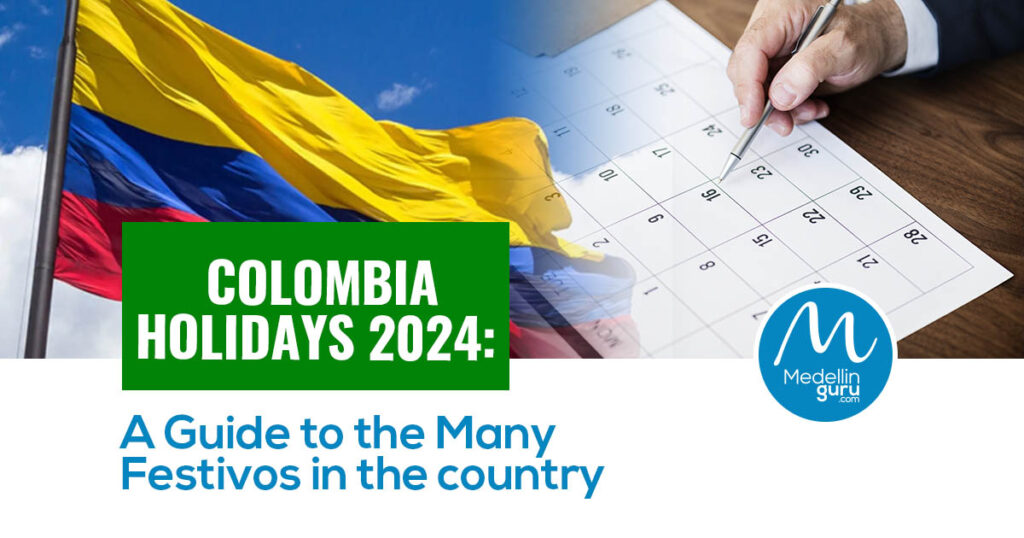
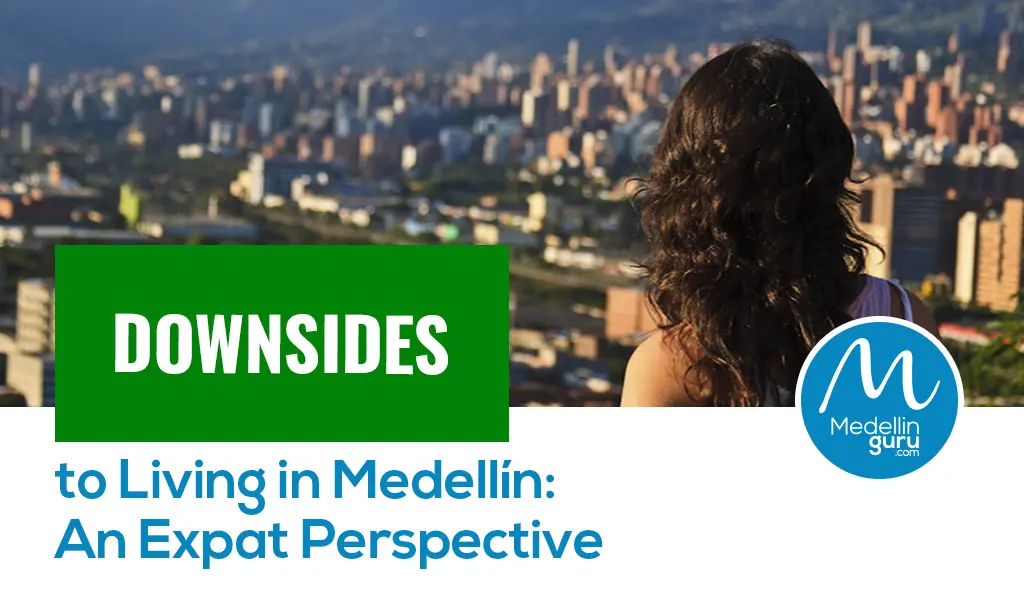
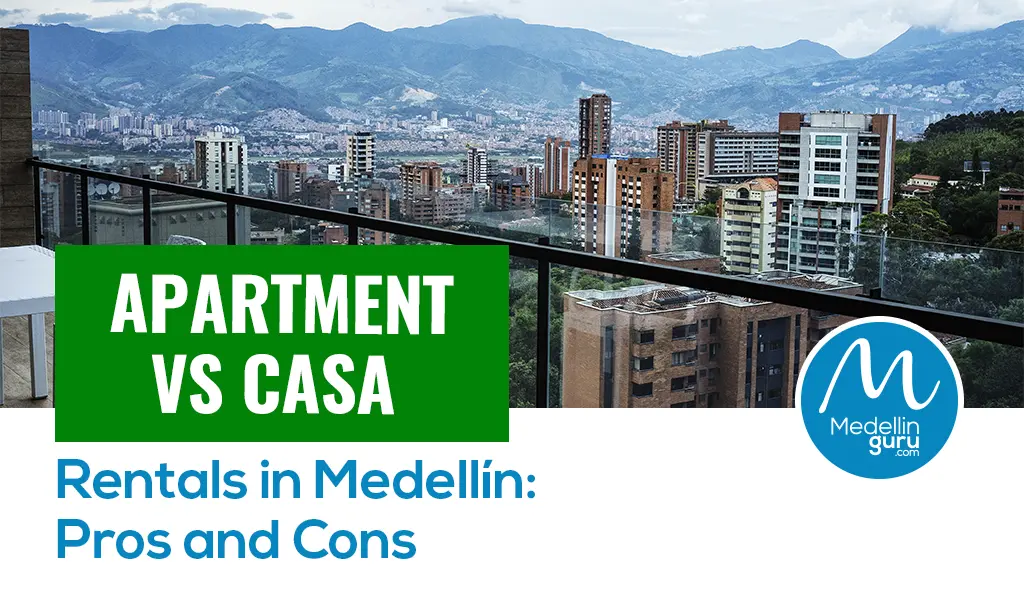


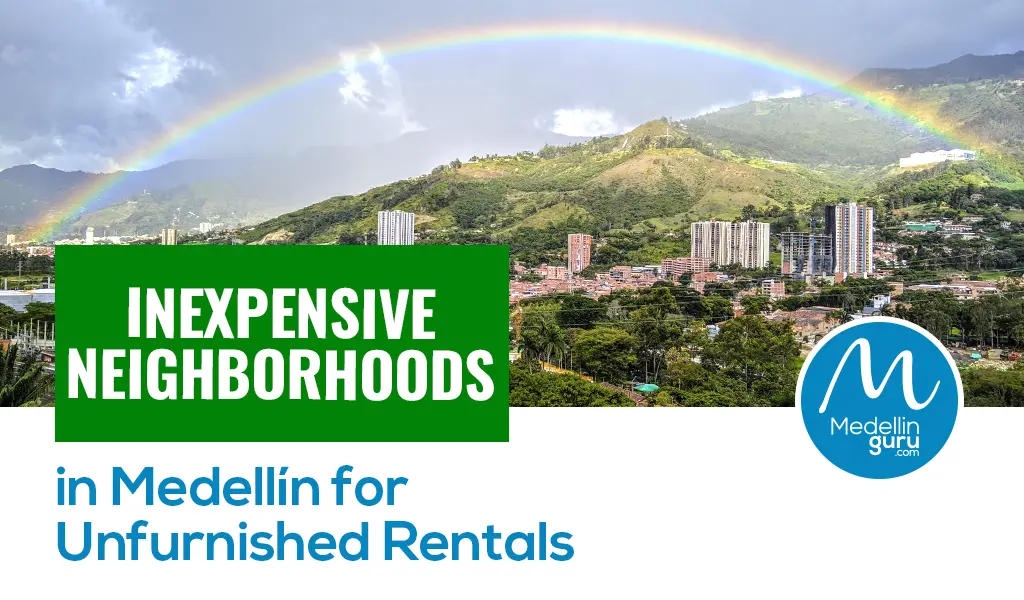

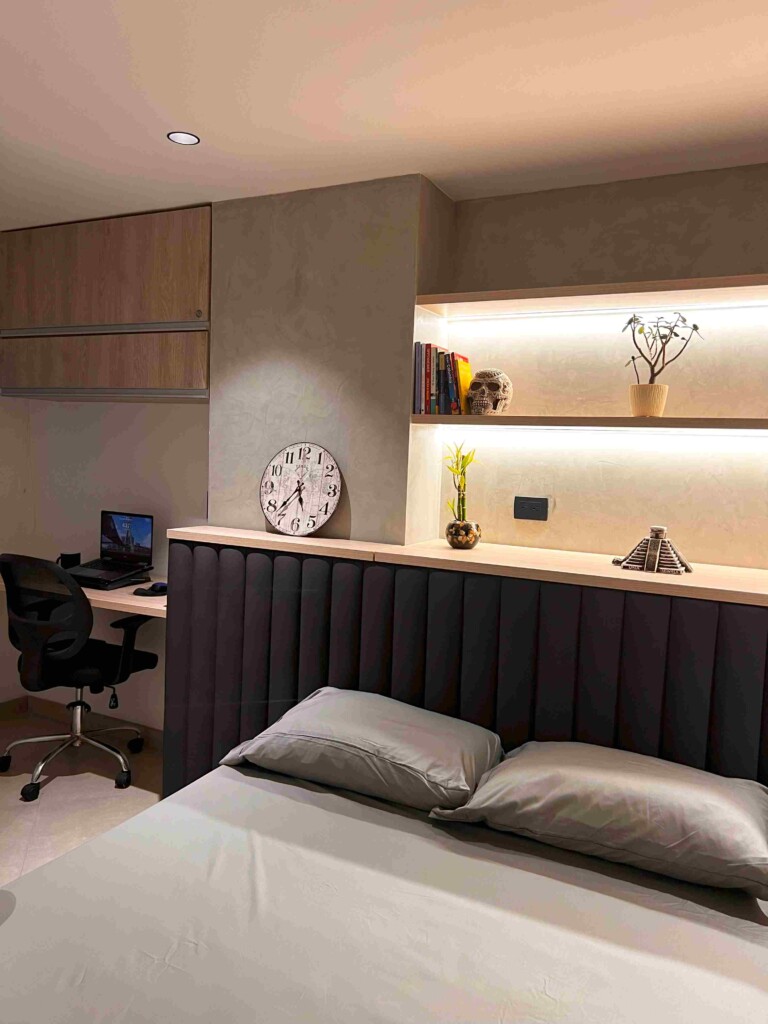
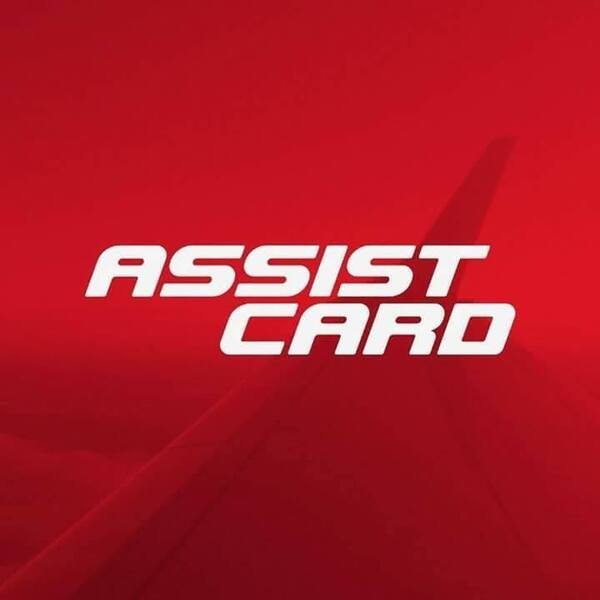

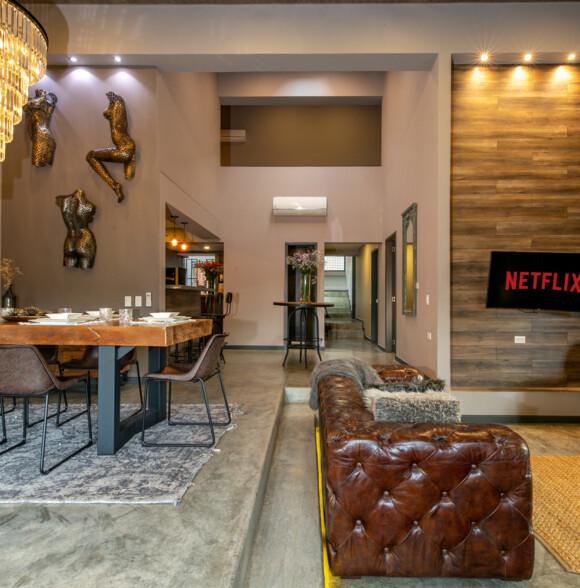



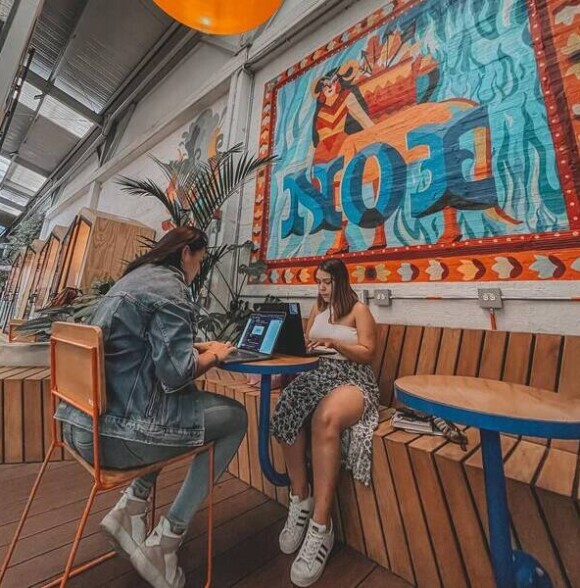



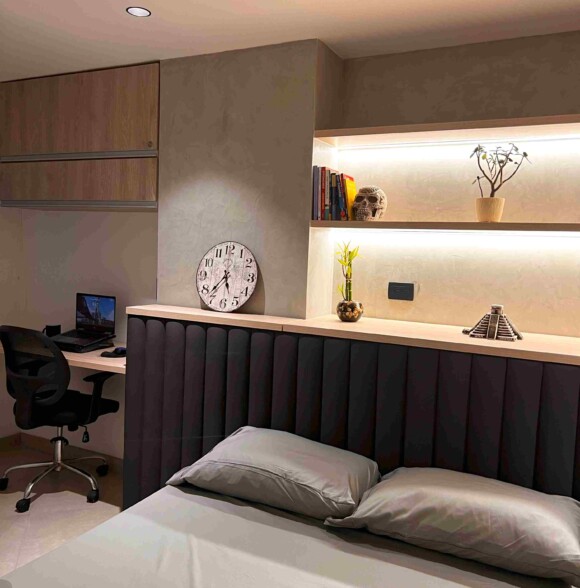









12 thoughts on “Rio Claro Nature Reserve: A Perfect Getaway from Medellín”
Prices for rafting have doubled since this article was written; now 50k per person. Best rooms at el Refugio are panoramic 1-4. Would be nice if dinner had a vegetarian (or kids) food option.
Thanks so much for the article, we wanna go tomorrow to Rio Claro and have booked a room Already. On Friday we need to go back, best would be from. There to Salento directly. Do you know if there is any possibility?
And it’s Tru that every 30 minutes a bus is coming to that can pick us up and drive us to medellin? Do you know if there are seats available always?
Thanks so so much, my best Tine
Great article. If the Rio Claro doesn’t accept credit cards, how would a foreigner reserve a room before flying to Medellin? I assume that doing the high seizing that the good rooms would already be reserved by the time when arrive in Medellin to make a reservation.
You can call to book reservations and I have heard they don’t accept credit cards but you can find out when you call – see: http://www.rioclaroreservanatural.com/en/how-to-reserve/
Great report. Thank you!
Thanks for the helpful article Sonja, I am planning to go to Rio Claro next week.
Thanks Sonja, we look forward to staying in one of the corner rooms at El Refugio!